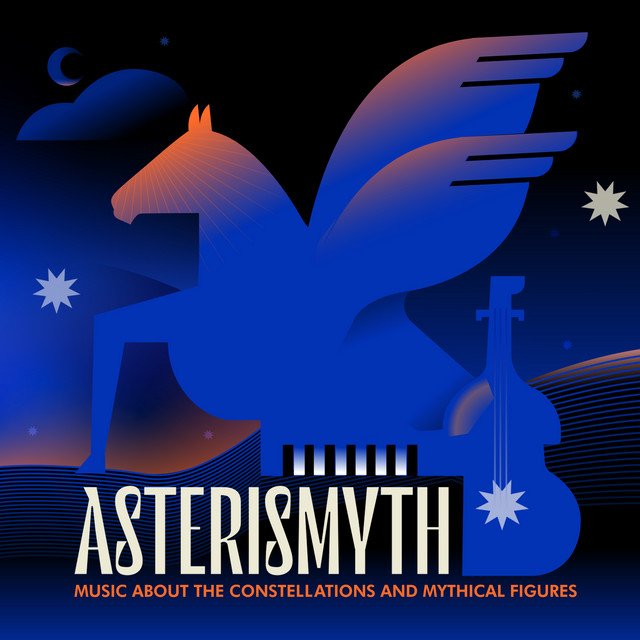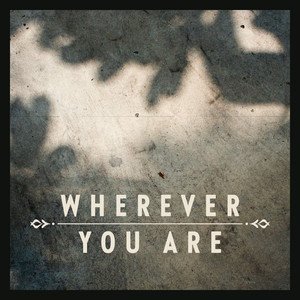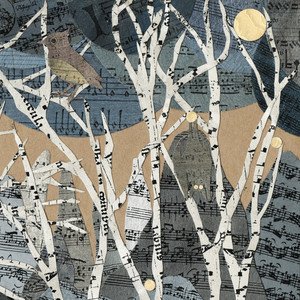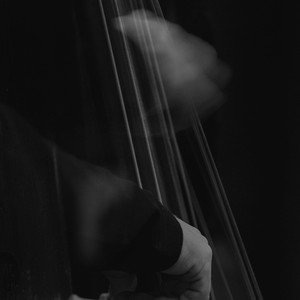Jazz Music ⁞ New Releases⁞ Artist Interviews⁞ Music News
Introduction of Jazz Music
Jazz is a genre of music that originated in the African-American communities of New Orleans, United States, in the late 19th and early 20th centuries. It is characterized by its use of improvisation, complex harmonic structures, and a wide range of musical influences, including blues, gospel, and European classical music. Jazz is known for its swing rhythm, which is created by the use of syncopated rhythms and a strong pulse. It is often played by small ensembles, such as a quintet or sextet, and is known for its ability to adapt to a wide range of musical contexts and styles. Jazz has had a significant influence on many other genres of music, and has been an important part of the cultural fabric of the United States and the rest of the world for more than a century.
Jazz by Nagamag Playlist on Spotify
Jazz Featured Releases
joey calveiro – despertar | Jazz music review
“Guitars themes perfectly aligned together and produced so well. Song really have that hook, catchy moment that you want to come back again and again. Lead saxophone theme is just mesmerizing, layered with cinematic atmosphere followed with dreamy piano theme and strings in the background. ”
-Nagamag.com
Expand to read review translations *
“Τα κιθάρες θέματα είναι τέλεια ευθυγραμμισμένα και παρήγαγαν τόσο καλά. Το τραγούδι έχει πραγματικά αυτό το γάντζο, πιασάρικη στιγμή που θέλετε να επιστρέψετε ξανά και ξανά. Το θέμα του σαξόφωνο μολύβδου είναι απλά μαγευτικό, στρωματοποιημένο με κινηματογραφική ατμόσφαιρα που ακολουθείται με ονειρικό θέμα πιάνου και χορδές στο παρασκήνιο.”
-Nagamag.com
“Temas de guitarras perfectamente alineados y producidos muy bien. La canción realmente tiene ese gancho, pegadizo, que quieres volver una y otra vez. El tema del saxofón principal es simplemente fascinante, en capas de atmósfera cinematográfica seguida de tema de piano de ensueño y cuerdas en el fondo.”
-Nagamag.com
The original review of “joey calveiro – despertar” is written in the native language that is spoken by the dedicated, for this song, Nagamag’s Jazz reviewer and followed by two translations*, of which the one depends from the country of origin of the artist “joey calveiro” (United States) and the other one is translated to a different language than original review and the country of origin of the artist.
* Automatically Translated
Nagamag unveils the mesmerizing composition “despertar”, an extraordinary creation of harmony and creativity that “joey calveiro” offered to all of us. A Jazz song, which evoked an emotional voyage to our curator that desired to write down a unique review for “joey calveiro – despertar”. What also sets this song among the featured choices of Nagamag is the way that “despertar” is enriched with Classical characteristics. “joey calveiro – despertar” is a rich music creation that deserves to be listened to again and again. Nagamag is honored to share this detailed music review by one of our experienced reviewers for Jazz music compositions. As always, Nagamag keeps up evaluating Jazz songs from across the globe, ensuring that all Jazz enthusiasts around the world have access to these auditory treasures .
Additional information/sources for joey calveiro – despertar
“Despertar” is an original composition featuring piano, saxophone, acoustic guitar, and strings. It’s a very calming, softly mixed and mastered, melodic song with a peaceful range
Jazz home page where “joey calveiro – despertar” is hosted on Nagamag Music Magazine
Nagamag takes pride in supporting Jazz artists like “joey calveiro”, providing music reviews and music discoveries like “despertar”.
This music post about song “despertar” by “joey calveiro” is hosted in Jazz page on Nagamag.
There you can find similar Jazz artists to “joey calveiro” and more Jazz, Classical songs like “despertar” that have been carefully selected by Nagamag’s Jazz experienced curators and reviewed by Nagamag’s Jazz dedicated reviewers.
Learn everything about Jazz on Wikipedia
If you enjoyed “joey calveiro – despertar” but you have never listened before to any other Jazz song or you are interested in learning more about Jazz music gerne then click here to visit Jazz music page on Wikipedia.
Jazz music refers to a distinct style with common characteristics. Each genre carries its unique sound, instruments, and cultural influences. For a deeper understanding of Jazz music, Wikipedia provides comprehensive insights into its history, notable artists, and iconic works. Delve into the diverse and dynamic world of Jazz music through this valuable resource, broadening your knowledge around Jazz genre.
Extra Time – Where Is The Light | Jazz music review
“Soothing and easy listening sounds make this jazz song very enjoyable. Catchy violins theme fit so well, creating wonderful atmosphere within the song and adding dreamy cinematic momentum. Her voice is just amazing, feels like a blissful layer within this amazing jazz orchestration of very talented musicians. ”
-Nagamag.com
Expand to read review translations *
“Οι καταπραϋντικοί και εύκολοι ήχοι ακρόασης κάνουν αυτό το τραγούδι τζαζ πολύ ευχάριστο. Το Catchy Violins ταιριάζει τόσο καλά, δημιουργώντας υπέροχη ατμόσφαιρα μέσα στο τραγούδι και προσθέτοντας ονειρική κινηματογραφική ορμή. Η φωνή της είναι απλά εκπληκτική, αισθάνεται σαν ένα ευτυχισμένο στρώμα μέσα σε αυτή την εκπληκτική τζαζ ενορχηστρώση πολύ ταλαντούχων μουσικών.”
-Nagamag.com
“Los sonidos de escucha relajantes y fáciles hacen que esta canción de jazz sea muy agradable. El tema de los violines pegadizos se ajusta tan bien, creando un ambiente maravilloso dentro de la canción y agregando impulso cinematográfico soñador. Su voz es simplemente increíble, se siente como una capa maravillosa dentro de esta increíble orquestación de jazz de músicos muy talentosos.”
-Nagamag.com
The original review of “Extra Time – Where Is The Light” is written in the native language that is spoken by the dedicated, for this song, Nagamag’s Jazz reviewer and followed by two translations*, of which the one depends from the country of origin of the artist “Extra Time” (Australia) and the other one is translated to a different language than original review and the country of origin of the artist.
* Automatically Translated
Nagamag unveils the mesmerizing composition “Where Is The Light”, an extraordinary creation of harmony and creativity that “Extra Time” offered to all of us. A Jazz song, which evoked an emotional voyage to our curator that desired to write down a unique review for “Extra Time – Where Is The Light”. What also sets this song among the featured choices of Nagamag is the way that “Where Is The Light” is enriched with Funk characteristics. “Extra Time – Where Is The Light” is a rich music creation that deserves to be listened to again and again. Nagamag is honored to share this detailed music review by one of our experienced reviewers for Jazz music compositions. As always, Nagamag keeps up evaluating Jazz songs from across the globe, ensuring that all Jazz enthusiasts around the world have access to these auditory treasures .
Additional information/sources for Extra Time – Where Is The Light
Extra Time is music about stories. Cinematic stories that can be told in the format of a 3 minute song. Its lush, it’s melodic, its harmonic and intelligent.
Jazz home page where “Extra Time – Where Is The Light” is hosted on Nagamag Music Magazine
Nagamag takes pride in supporting Jazz artists like “Extra Time”, providing music reviews and music discoveries like “Where Is The Light”.
This music post about song “Where Is The Light” by “Extra Time” is hosted in Jazz page on Nagamag.
There you can find similar Jazz artists to “Extra Time” and more Jazz, Funk songs like “Where Is The Light” that have been carefully selected by Nagamag’s Jazz experienced curators and reviewed by Nagamag’s Jazz dedicated reviewers.
Learn everything about Jazz on Wikipedia
If you enjoyed “Extra Time – Where Is The Light” but you have never listened before to any other Jazz song or you are interested in learning more about Jazz music gerne then click here to visit Jazz music page on Wikipedia.
Jazz music refers to a distinct style with common characteristics. Each genre carries its unique sound, instruments, and cultural influences. For a deeper understanding of Jazz music, Wikipedia provides comprehensive insights into its history, notable artists, and iconic works. Delve into the diverse and dynamic world of Jazz music through this valuable resource, broadening your knowledge around Jazz genre.
Gabe Preston Sounds (GPS) – Tendinitis | Jazz music review
“Όμορφη μελωδία γεμάτη πάθος και ταπεραμέντο που ανεβάζει τη διάθεση και σε παρασύρει σε ένα ξέφρενο χορό. Η ένταση του ρυθμού ανεβάζει την αδρεναλίνη και ζωντανεύει την ατμόσφαιρα. Σίγουρα ένα κομμάτι που θα ήθελες να ακούς μαζί με φίλους με τη συνοδεία του ποτού σου, ατενίζοντας από ψηλά την φωτισμένη πόλη.”
-Nagamag.com
Expand to read review translations *
“Beautiful melody full of passion and temperament that raises the mood and drags you into a frantic dance. The rhythm intensity raises adrenaline and brings to life the atmosphere. Certainly a piece you would like to hear with friends with the accompaniment of your drink, gazing at the illuminated city from above.”
-Nagamag.com
“Hermosa melodía llena de pasión y temperamento que aumenta el estado de ánimo y te arrastra a un baile frenético. La intensidad del ritmo aumenta la adrenalina y da vida a la atmósfera. Ciertamente, una pieza que le gustaría escuchar con amigos con el acompañamiento de su bebida, mirando la ciudad iluminada desde arriba.”
-Nagamag.com
The original review of “Gabe Preston Sounds (GPS) – Tendinitis” is written in the native language that is spoken by the dedicated, for this song, Nagamag’s Jazz reviewer and followed by two translations*, of which the one depends from the country of origin of the artist “Gabe Preston Sounds (GPS)” (United States) and the other one is translated to a different language than original review and the country of origin of the artist.
* Automatically Translated
Nagamag unveils the mesmerizing composition “Tendinitis”, an extraordinary creation of harmony and creativity that “Gabe Preston Sounds (GPS)” offered to all of us. A Jazz song, which evoked an emotional voyage to our curator that desired to write down a unique review for “Gabe Preston Sounds (GPS) – Tendinitis”. What also sets this song among the featured choices of Nagamag is the way that “Tendinitis” is enriched with Indie Jazz characteristics. “Gabe Preston Sounds (GPS) – Tendinitis” is a rich music creation that deserves to be listened to again and again. Nagamag is honored to share this detailed music review by one of our experienced reviewers for Jazz music compositions. As always, Nagamag keeps up evaluating Jazz songs from across the globe, ensuring that all Jazz enthusiasts around the world have access to these auditory treasures .
Additional information/sources for Gabe Preston Sounds (GPS) – Tendinitis
“The project probably fits easiest under the jazz fusion umbrella, but even there, Preston pushes boundaries — incorporating atmospheric keyboard tones, feeding their instruments through a chain of effects pedals for a psychedelic effect, bringing in local MC Josh ‘Eyeso’ Donovan to bar down on a few tracks.”
– John Vettese, WXPN 88.5
GPS (Gabe Preston Sounds) is an experimental creative fusion jazz project based in Philadelphia, initially formed in 2019 with the sole purpose of being able to stay open within the jazz realm and explore different avenues of melody and improvisation, through traversing and combining different styles of playing with both common and odd rhythms and meters. As the acronym implies, Philly native Gabe Preston is the main mind behind the band with their wide palette of woodwinds (soprano/alto/tenor/baritone saxophones, flute, clarinet, bass clarinet, sometimes even the EWI) and compositions, meanwhile keyboardist and right-hand man Tony P.C. (Anthony Passante-Contaldi) also makes significant contributions to GPS’s explorations through an abundance of keyboard sounds and some compositions of his own. Styles of influence include fusion jazz/nü jazz, hip-hop/R&B, prog/math rock, avant-garde/free jazz, and even sometimes classical. After remote recording and releasing two singles during the 2020-21 quarantine era (“Yumeni” and “I-76 (feat. Martronimous)”), GPS released their debut album, [to the stratosphere], on all streaming platforms in late 2022, primarily recorded and produced at Studio 4 Recording in Conshohocken and featuring all original music by Preston. Since that time, the band has only been willing to reach further distances both physically and musically, within the Philly area and beyond, knowing they will always be able to deliver a little something for everyone in the process. Recent performances of note include the WXPN 88.5 Key Studio Session led by John Vettese, and the 2023 Subaru Cherry Blossom Festival of Greater Philadelphia. GPS plans to record and release new music later on in 2024, with at least an EP and album in the works.
Current band members:
Gabe Preston – soprano/alto/tenor/baritone saxophones, flute, clarinet, bass clarinet, EWI, main composer, bandleader
Tony P.C. – keyboard, composer, music director
Kyle Rowe – bass
Jack Thomas – drums
Stephanie Phillips – drums
Jazz home page where “Gabe Preston Sounds (GPS) – Tendinitis” is hosted on Nagamag Music Magazine
Nagamag takes pride in supporting Jazz artists like “Gabe Preston Sounds (GPS)”, providing music reviews and music discoveries like “Tendinitis”.
This music post about song “Tendinitis” by “Gabe Preston Sounds (GPS)” is hosted in Jazz page on Nagamag.
There you can find similar Jazz artists to “Gabe Preston Sounds (GPS)” and more Jazz, Indie Jazz songs like “Tendinitis” that have been carefully selected by Nagamag’s Jazz experienced curators and reviewed by Nagamag’s Jazz dedicated reviewers.
Learn everything about Jazz on Wikipedia
If you enjoyed “Gabe Preston Sounds (GPS) – Tendinitis” but you have never listened before to any other Jazz song or you are interested in learning more about Jazz music gerne then click here to visit Jazz music page on Wikipedia.
Jazz music refers to a distinct style with common characteristics. Each genre carries its unique sound, instruments, and cultural influences. For a deeper understanding of Jazz music, Wikipedia provides comprehensive insights into its history, notable artists, and iconic works. Delve into the diverse and dynamic world of Jazz music through this valuable resource, broadening your knowledge around Jazz genre.
Latest Jazz discoveries
Leo – Stefanos Kozanis
В мире музыки, где каждый звук может стать откровением, композиция -Leo- от -Stefanos Kozanis- выделяется своей мелодичностью... >>> Read full review & listen to the song on Nagamag #neoclassical #nagamag #musicmagazine #musicreview #review
Wherever You Are (feat. Sinne Eeg, Jan Harbeck & Lars Jansson) – The New Standard
Ένα υπέροχο ρομαντικό κομμάτι γεμάτο αγάπη και έρωτα. Τα εξαιρετικά φωνητικά χαϊδεύουν τόσο απαλά τα αφτιά μας και μας προσφέ... >>> Read full review & listen to the song on Nagamag #jazz #thenewstandard #denmark #nagamag #musicmagazine #musicreview #review
Take It from Me – Avery Raquel
Τα ατελείωτα συναρπαστικά φωνητικά με την καθαρή και νεραϊδίσια χροιά τους είναι πραγματική απόλαυση να τα ακούς. Η μελωδία γ... >>> Read full review & listen to the song on Nagamag #neosoul #contemporaryrnb #alternative #indiernb #averyraquel #canada #nagamag #musicmagazine #musicreview #review
SEMI-AUTOMATIC TRINKET (TAKE IT!) – Dahlia Dumont
Η εκπληκτική μελωδία με τον γοητευτικό παραλογισμό της μας ελκύει και μας παρασύρει ευχάριστα. Οι επιτυχημένες εναλλαγές της ... >>> Read full review & listen to the song on Nagamag #nujazz #jazztronica #electro #dahliadumont #unitedstates #nagamag #musicmagazine #musicreview #review
Dream On (feat. Lars Danielsson & Peter Rosendal) – Mette Juul
Τίποτα δεν μπορεί να χαλάσει αυτή την μαγική ηρεμία της μελωδίας. Με απαλές και διακριτικές κινήσεις σε διαπερνά και σου προσ... >>> Read full review & listen to the song on Nagamag #nujazz #jazztronica #jazz #mettejuul #denmark #nagamag #musicmagazine #musicreview #review
Care For You – ANOTR
Η μελωδία με όρεξη και φρεσκάδα μας κάνει να λικνιζόμαστε κάτω τον ήλιο μια φωτεινή μέρα. Τα φωνητικά διακριτικά και απαλά μα... >>> Read full review & listen to the song on Nagamag #neosoul #anotr #netherlands #nagamag #musicmagazine #musicreview #review
La Balançoire rouge – Johan Dupont Trio
Πόσο αρμονικά και γαλήνια οι νότες του πιάνου μας αγκαλιάζουν. Η μελωδία με ένα ανέμελο και παιχνιδιάρικο τρόπο τρέχει μαζί μ... >>> Read full review & listen to the song on Nagamag #nujazz #jazztronica #neo #modernclassical #jazz #johanduponttrio #belgium #nagamag #musicmagazine #musicreview #review
Juste après les volcans – Casimir M
Οι απαλές και διακριτικές νότες της μελωδίας μας γαληνεύουν και μας πηγαίνουν ένα απολαυστικό μουσικό ταξίδι. Το μελαγχολικό ... >>> Read full review & listen to the song on Nagamag #neo #modernclassical #jazz #lounge #casimirm #switzerland #nagamag #musicmagazine #musicreview #review
Fornesbreen ved midnatt – Nicolai Kornerup
Η ευκίνητη ροή της μελωδίας και η χαρούμενη διάθεση της δημιουργεί μια ευχάριστη και απολαυστική ατμόσφαιρα που σίγουρα θες ν... >>> Read full review & listen to the song on Nagamag #jazz #nicolaikornerup #denmark #nagamag #musicmagazine #musicreview #review
Some Jazz subgenres
There are many subgenres of jazz, and the boundaries between them can be somewhat fluid. Here are a few of the most common subgenres of jazz:
Dixieland jazz: Also known as “traditional” or “New Orleans” jazz, this style is characterized by its use of collective improvisation and a strong rhythm section, featuring instruments such as the trumpet, trombone, and clarinet.
Swing: This style emerged in the 1930s and 1940s and is characterized by its use of a swinging rhythm and big band instrumentation. It was popularized by bands led by musicians such as Duke Ellington and Benny Goodman.
Bebop: This style emerged in the 1940s and is characterized by its fast tempo, complex chord progressions, and extensive use of improvisation. It was popularized by musicians such as Charlie Parker and Dizzy Gillespie.
Cool jazz: This style emerged in the 1950s and is characterized by its use of complex harmonies and a laid-back, relaxed approach to rhythm. It was popularized by musicians such as Miles Davis and Dave Brubeck.
Fusion: This style emerged in the 1970s and is characterized by its incorporation of elements from other genres of music, such as rock, funk, and world music. It was popularized by musicians such as John McLaughlin and Chick Corea.
Smooth jazz: This style emerged in the 1980s and is characterized by its use of electronic instrumentation and a focus on melody and groove. It was popularized by musicians such as George Benson and Grover Washington Jr.
Hard bop: This style emerged in the 1950s and is characterized by its use of blues and gospel influences and its incorporation of elements from bebop and swing. It was popularized by musicians such as Horace Silver and Art Blakey.
Free jazz: This style emerged in the 1960s and is characterized by its use of extended improvisation and a lack of strict chord progressions or other formal structures. It was popularized by musicians such as Ornette Coleman and John Coltrane.
Latin jazz: This style is characterized by its incorporation of Latin American rhythms and melodies, as well as its use of percussion instruments such as congas, timbales, and bongos. It was popularized by musicians such as Tito Puente and Cal Tjader.
Acid jazz: This style emerged in the 1980s and is characterized by its incorporation of elements from funk, soul, and hip hop, as well as its use of electronic instrumentation. It was popularized by musicians such as Brand New Heavies and Jamiroquai.
Jazz-rock: This style emerged in the 1970s and is characterized by its incorporation of elements from rock music and its use of electric instruments. It was popularized by musicians such as Mahavishnu Orchestra and Weather Report.
Jazz-funk: This style is characterized by its incorporation of elements from funk music and its use of electric instruments and groove-based rhythms. It was popularized by musicians such as James Brown and George Clinton.
As with any genre of music, these subgenres are just a few of the many that exist within the broader category of jazz. There are many other styles and variations within jazz.
The most used instruments in Jazz Music
There are many different instruments that are commonly used in jazz music, and the specific instruments used can vary depending on the style and context of the music. Here are a few of the most common instruments used in jazz:
Piano: The piano is a common instrument in jazz music and is often used to provide the harmonic foundation for the music. Jazz pianists may use a range of techniques, including comping (providing chordal accompaniment), soloing (performing a melodic solo), and improvising (creating music spontaneously).
Drums: The drums are an important part of the rhythm section in jazz music and are often used to create a swinging or groove-based feel. Jazz drummers may use a range of techniques, including various stick and cymbal patterns, to create complex rhythms and interactive interactions with other musicians.
Bass: The bass is another important part of the rhythm section in jazz music and is often used to provide the foundation for the music. Jazz bassists may use a range of techniques, including walking bass lines (a repeating pattern of notes played over the chord progression of a song) and soloing, to create a strong rhythmic and melodic foundation for the music.
Guitar: The guitar is often used in jazz music and can play a variety of roles, from providing chordal accompaniment to soloing. Jazz guitarists may use a range of techniques, including chord voicings (arrangements of notes in a chord), arpeggios (broken chords played one note at a time), and improvisation, to create complex and interesting musical textures.
Saxophone: The saxophone is a common instrument in jazz music and is often used to play melodies and improvise solos. Jazz saxophonists may use a range of techniques, including alternate fingerings, multiphonics (playing more than one pitch at a time), and circular breathing (a technique for continuous blowing), to create a wide range of sounds and textures.
Vocals: Vocals are often used in jazz music, and many jazz singers have made significant contributions to the genre. Jazz vocals can take many forms, ranging from scat singing (improvised vocalizations using nonsense syllables) to more traditional vocal styles such as singing with lyrics. Some famous jazz singers include Billie Holiday, Ella Fitzgerald, and Louis Armstrong, all of whom are known for their unique vocal styles and ability to improvise.
In addition to traditional vocals, many jazz musicians also use electronic effects and processing to manipulate their voices, creating a wide range of sounds and textures. Some jazz musicians, such as Bobby McFerrin and Gregory Porter, have made significant contributions to the genre using only their voices, without any accompanying instruments.
In jazz music, lyrics are often used in the same way as in other genres of music, to express emotions, tell a story, or convey a message. However, jazz lyrics may also be used to create a structure for improvisation or to provide a basis for scat singing, which is a form of vocal improvisation in which the singer uses nonsense syllables instead of actual words.
Jazz lyrics may also be more abstract and poetic than lyrics in other genres of music, and may use figurative language or symbolism to convey meaning. Jazz lyrics often reflect the social and cultural contexts in which the music was created, and may address themes such as love, loss, hope, and social or political issues.
Overall, vocals and the meaning of lyrics in jazz music depends on the context in which they are used and the intentions of the songwriter. They can be used to express emotions, tell a story, convey a message, or provide a structure for the music to follow.












